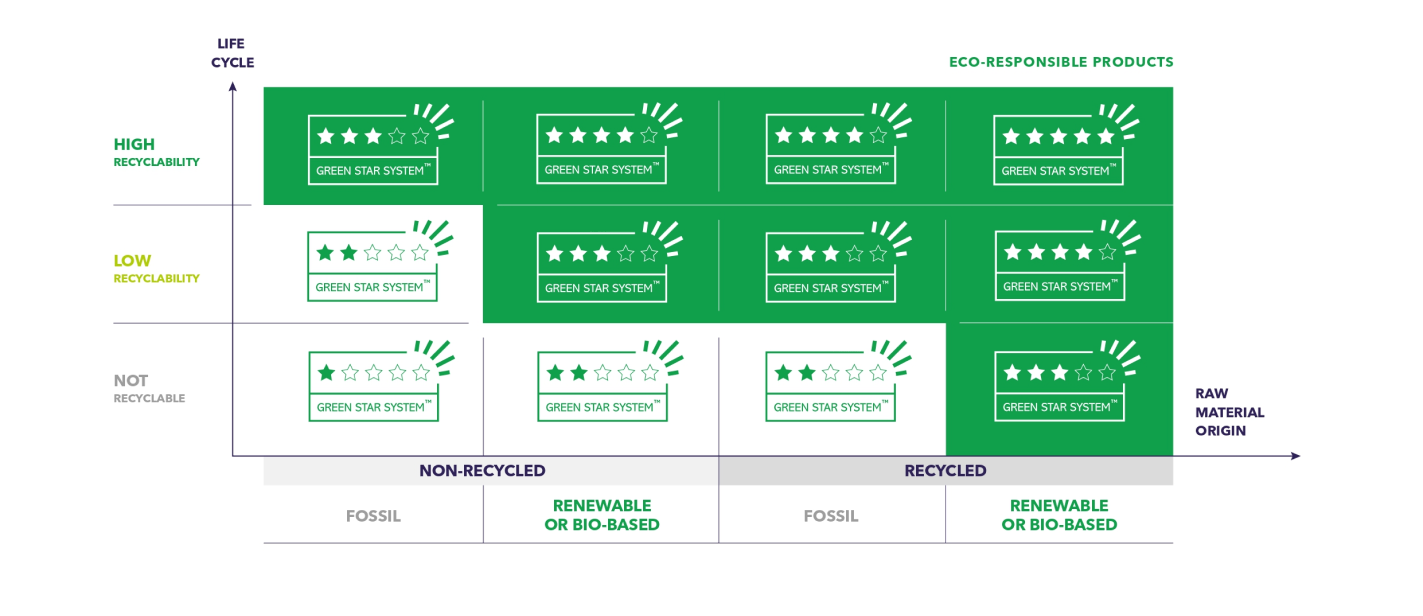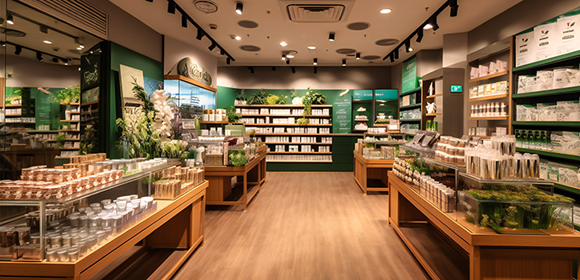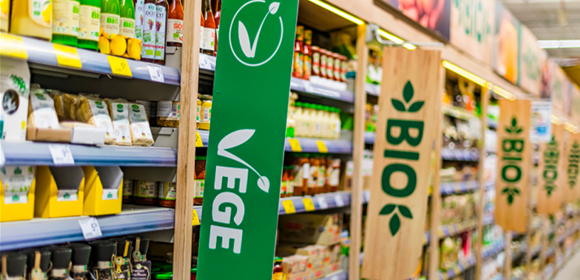
In this convoluted world of claims and conjectures about what’s sustainable and what’s not, it’s easy to get lost in all the noise. But we can’t afford to be confused! We must be confident in our decision making. We must be able to rely on a factual and impartial means of measuring the sustainability level of each product we purchase. In the Visual Communication industry, such a system is long overdue.
To help you better understand the impact of various product types and thus make better decisions going forward, we’ve created the Antalis Green Star System™ for Visual Communication. The scoring system allows you to easily compare the environmental performance of our products at a glance.
Green Star System™ : a 5-star environmental scoring system
This classification is grounded in a strict set of criteria based on two key parameters: raw material and end of life
The more stars a material has, the more sustainable it is!

What we measure
Raw material
Lower ratings are given to materials made from virgin fossil fuels – basically, plastics – while higher scores are applied to renewable materials, and even higher for products made of recycled materials. The products can be made from non-recycled/virgin raw materials or from recycled materials having been used before and then put through a process so that it can form a new product.
Raw materials can either come from fossil and mineral sources (not renewable) or from renewable/biosourced sources.
NON-RECYCLED FOSSIL FUELS
are hydrocarbon; primarily coal, fuel or natural gas that are not derived from plant sources – made from non-recycled/virgin raw material.
RECYCLED RENEWABLE & BIOSOURCED
material of plant which are based on the photosynthetic primary production – made from recycled raw material.
NON-RECYCLED RENEWABLE & BIOSOURCED
material of plant which are based on the photosynthetic primary production – made from non-recycled/virgin raw material.
RECYCLED FOSSIL FUELS
are hydrocarbon; primarily coal, fuel or natural gas that are not derived from plant sources – made from recycled raw material.
End of life
Here we consider how the product is dealt with after use. For example, is it difficult to recycle?
LOW RECYCLABILITY
The product is very difficult to recycle, either due to fundamental design issues or lack of a specific waste stream. This is the case for multi-composite materials or materials that include other substances, such as additives and adhesives.
MID RECYCLABILITY
The raw material is difficult to recycle because of the lack of a specific waste stream widely present in the European Union. This is the case for plastics made with single material polymers, such as PVC and PU.
HIGH RECYCLABILITY
A highly effective process is in place to recover plastic waste and reprocess the material into useful products. Common examples include PET, PP and PE.
REACH
Regulation adopted by the European Union to improve the protection of human health and the environment from risks related to toxic chemicals.
Which products are excluded from the classification ? All substrates/media products are classified, the only exclusions are Hardware machines and accessories
How to find them ?
In our eshop, you will find the Green Star System™ ranking for our Visual Communication products. Now together we can identify more sustainable alternatives for your customers.
Taking responsible action is critical. But it’s also good to be able to demonstrate it. After all, today’s consumers and thought leaders are rightfully demanding progress. By using higher-rated products, you’re able to display your results and prove to your customers and stakeholders that you’ve taken meaningful action to reduce your environmental footprint.








